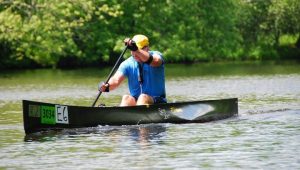
image (c) 2011, Kelly Gelinas, used by permission
Our hulls, paddles, and the water already know what to do. We use their language – the language of science – to get at the why.
- Why do hulls float, why do they move when paddled, and what are the three types of drag that impede their motion?
- How can we use this understanding to better trim and turn our hulls, select paddles, cross rivers, optimize our stroke, or just stay upright?
- How can competitive paddlers adapt training concepts from other sports to make them paddling-specific?
The Science of Paddling blog and accompanying book are the ideal resource for the curious paddler. As of June 2023 we have readers in 133 countries – 68% of the world. Thanks for being part of our global community!
About the Author
As an engineer I find paddling not only fun, but technically fascinating. Spending hours at a time on the ergometer in Winter, and on the water when it’s not frozen, has given me time to ponder why canoes do what they do… and to contemplate why I’m so slow. (But that’s another story.) This blog is a collection of articles on the science underlying paddling, where we consider topics of (hopefully) general interest in paddling physics, exercise physiology, and whatever else I find interesting, with a slant toward performance. The articles are written for a general audience that would be comfortable reading Scientific American. I write them because it’s fun, and I want to share what I’ve learned.
In case you’re curious: I’m an avid paddler, having first explored the sport as a wilderness canoe tripper in the Northeastern United States and Canada. I’m a dedicated canoe racing middle-of-the-packer, and have been known to pole canoes, run spring whitewater, compete in canoe orienteering, and make paddles. I was an instructor at the annual Maine Canoe Symposium from 1997 to 2018. When I’m not paddling or writing I work as an engineering and intellectual property consultant. I’m an inventor and patent holder of technologies for monitoring sports performance, with 10 issued patents and approximately 50 conference presentations and journal publications. I hold a BSE cum laude in mechanical and aerospace engineering from Princeton University, and an MS and PhD in mechanical engineering from the Massachusetts Institute of Technology with a minor in applied mathematics. I’ve worked, studied, and conducted research in acoustics, fluid mechanics, embedded systems, wired and wireless sensing, medical imaging, biophotonics, and control systems.
